:focal(700x527:701x528)/https://tf-cmsv2-smithsonianmag-media.s3.amazonaws.com/filer_public/a0/09/a009d531-d145-4a67-b0fb-f5a8268401fe/inarticle-science-books2021-1400w.jpg)
This year the news cycle was dominated again by stories about Covid-19, and rightly therefore, but other big discoveries were made throughout the sciences. NASA landed another wanderer on Mars, researchers discovered a modern potential species of human, and scientists found ways climate change is influencing the development of animals—all topics that may lend themselves to future books .
In 2021, with one class of the battle against the coronavirus behind us, several books came out related to the pandemic. One of those books, The Premonition, by Michael Lewis, is on this list. Another crucial ledger that has bear on how we fight disease, The Code Breaker, by Walter Isaacson, is rather listed among Smithsonian scholars ’ picks of the best books of the year. ( We didn ’ metric ton want to review it a irregular time here. ) The books we have selected include dispatches from researchers on their scientific quests to search for an elusive physics equation and learn about the connections betwen trees and in-depth narratives from veteran science journalists exploring everything from solutions to major environmental problems to the benefits of sweat. With so many informative and entertaining works to choose from, it was hard to pick just ten, but these are the books that influenced our thinking the most in 2021 .
Under a White Sky:The Nature of the Future, by Elizabeth Kolbert
Pulitzer Prize winner Elizabeth Kolbert investigates the wild ways scientists are solving complicated environmental problems in Under a White Sky. As Kolbert notes, humans have directly transformed more than half of the ice-free land on Earth, and indirectly transformed the other half—with many negative consequences in necessitate of fixing. She takes the lector to a duct near Chicago, where officials have electrified the water so damage incursive carp don ’ t make their direction up the watercourse and into the Great Lakes. She heads to Hawaii and Australia, where marine biologists are trying to engineer super corals that can withstand rising water temperatures to save reefs. And she details a geoengineer ’ sulfur design to pump baseball diamond dust into the atmosphere to reflect sunlight and reduce the impact of climate change. Late in the book, she talks to Dan Schrag, a geologist who helped set up Harvard ’ s geoengineering program. He says, “ I see a fortune of pressure from my colleagues to have a felicitous ending. People want hope. And I ’ m like, ‘ You know what ? I ’ m a scientist. My job is not to tell people the good news. My problem is to describe the global a accurately as possible. ’ ” And that is precisely what Kolbert does in her book. She paints a naturalistic painting of precisely where we ’ re at. ( Joe Spring )
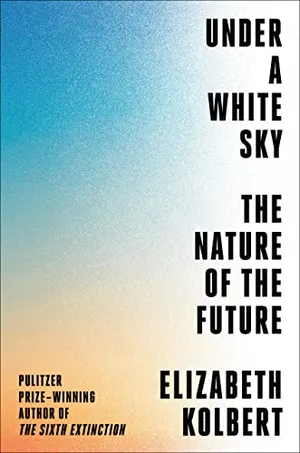
Under a White Sky: The Nature of the Future
That man should have dominion “ over all the earth, and over every creeping thing that creepeth upon the worldly concern ” is a prophecy that has hardened into fact. so permeant are human impacts on the planet that it ’ s said we live in a new geological epoch : the Anthropocene. In Under a White Sky, Elizabeth Kolbert takes a hard look at the new universe we are creating.
Reading: The Ten Best Science Books of 2021
The Premonition: A Pandemic Story, by Michael Lewis
The Premonition, by Michael Lewis, is a thriller, though you know from the starting signal its heroes lose. The book follows several public servants and scientists who saw Covid-19 coming, and did everything within their powers to stop the virus from spreading in the United States. Lewis sticks to his brand : He parachutes readers into the lives of improper thinkers who challenged alleged experts. In earlier works, those insiders were Wall Street traders and pro-baseball scouts ( The Big Short and Moneyball, respectively ). The Premonition ’ sulfur antagonists are high-level politics officials that ignore or muzzle our heroes, and bureaucratic systems that pose barriers to their success. In Part I, Lewis recounts the protagonists ’ backstories, including a public health officeholder once damned to hell by hometown church leaders for attending medical school ; a microbiologist who injected an Ebola cousin into the hearts of populate pythons ; and the Wolverines—a screen group of medical and military government insiders pushing pandemic readiness. In Part II, largely set in early 2020, the characters converge and try to contain Covid. Lewis ’ account then becomes a exasperating page-turner, as politics, optics and profits thwart our heroes and allow the virus to rampage. ( Bridget Alex )

The Premonition: A Pandemic Story
Michael Lewis ’ s taut and bright nonfiction thriller pits a ring of medical visionaries against the rampart of ignorance that was the official response of the Trump administration to the outbreak of COVID-19 .
Finding the Mother Tree: Discovering the Wisdom of the Forest, by Suzanne Simard
Forest ecologist Suzanne Simard penned our favorite book by a scientist this year with her deeply personal and engaging Finding the Mother Tree : Discovering the Wisdom of the Forest. Simard grew up in Canada in a logging kin and, at old age 20, worked as a seasonal employee for a logging party. But evening early on on, she had a feel that clear-cutting forests and poisoning the earth so monocultures could grow was the incorrect approach. Simard suspected that forests were made up of coordinated entities that helped each early out, and so she pursued a career in science—studying silviculture for the Forest Service and finally earning a PhD in forest sciences at Oregon State University. In experiments, she documented that birch and Douglas fir trees traded carbon underground. She established that the afforest is a “ wood-wide web, ” with plants exchanging nutrients and chemical signals via their roots and fungal networks, and found that big old trees, or “ Mother Trees, ” were at the center of these networks, frequently helping their offspring .
Simard ’ mho discoveries have implications for how governments should manage forests. Clear-cutting swaths and suppressing all but the coveted species may not be the best overture ; the ecologist alternatively argues for leaving Mother Trees and enabling plants to grow in concert and support each early. But Simard ’ s science alone international relations and security network ’ t the reason this book impresses. Throughout it, she shares personal stories as she embarks on her scientific quest—her close kinship with her brother, the breakdown of her marriage and her conflict with breast cancer. In the midst of all this, Simard continues to push the limits of what is known about how forest work. She brings the reader with her—to scientific conferences where she speaks about inquiry that many in the consultation rebate, to her lab at the University of British Columbia where she does field experiments with graduate students and to forests in western Canada where grizzly bears roll. By crafting a narrative that incorporates so many personal and professional relationships, she shows how connections arsenic intricate as the solution and fungal network beneath the forest floor shaped her scientific journey. ( J.S. )
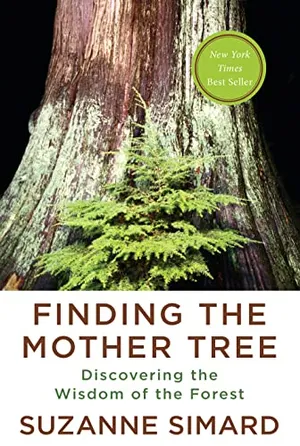
Finding the Mother Tree: Discovering the Wisdom of the Forest
Suzanne Simard brings us into her world, the intimate world of the trees, in which she brilliantly illuminates the bewitching and full of life truths — that trees are not merely the source of timber or pulp, but are a complicated, interdependent circle of life .
The Joy of Sweat: The Strange Science of Perspiration, by Sarah Everts
We are all perspiration, at least a little, all the time. That ’ s a dear thing. For one matter, fret keeps our hot-running mammal bodies from overheating—but there ’ s much more to the salty drop than that. In The Joy of Sweat, skill diarist Sarah Everts has composed a strange and fantastic protection to the bodily effluvia that keep us cool and so far carry then much information about ourselves. Sweat, Everts writes, is “ an curiously aureate room to control body temperature. ” Every person has two to five million effort pores, share of a built-in temperature control system. But as Everts tracks the natural and cultural history of sweat—from the ways other animals cool down to New Jersey scent manufacturers and russian focal ratio dates based on torso odor—it comes to be so much more. Sweat gives us personal scents that play a role in drawing card and may carry signals that we are disgusted. As the duplicate reinvention of the sauna hints, sometimes it fair feel good to have a vigorous fret. What starts as an exploration turns into an ode to our ever-present secretions. “ We ’ ra going to have to learn as a species to appreciate our effort, ” Everts writes, “ and, possibly, to embrace sweating even more than we already do. ” ( Riley Black )
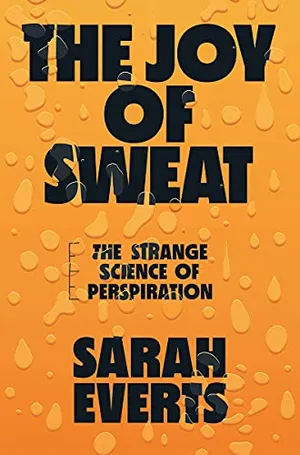
The Joy of Sweat: The Strange Science of Perspiration
Sweating may be one of our weirdest biological functions, but it ’ s besides one of our most vital and least understood. In The Joy of Sweat, Sarah Everts delves into its function in the body—and in homo history .
The God Equation: The Quest for a Theory of Everything, by Michio Kaku
In The God Equation, theoretical physicist Michio Kaku writes about his about lifelong deputation to find what he calls the “ Holy Grail of physics, ” a “ theory of everything. ” His ultimate goal is to write an equation that encompasses the unharmed of physics and that can explain everything from the Big Bang to the end of the population. Such an idea started with Isaac Newton and stumped Albert Einstein, who couldn ’ thyroxine come up with a theory that would unify all of the forces at free rein. If that all sounds excessively heavy, rest assured that Kaku makes it accessible by taking the reader along on his travel and writing about skill in clean, concise speech .
Kaku has sought out a grand piano equation since, at eight years previous, he saw a photograph of Einstein ’ south desk and learned in the caption the great scientist couldn ’ thymine finish the work he started. He transitions from that anecdote to history, introducing the subscriber to the ideas of the Greeks and Newton. As Kaku moves through the scientists that uncovered the major forces of the universe through equations, he drives home to the lector the importance of such milestones by detailing the technologies that resulted from the findings. Newton ’ s laws were used to perfect the steam locomotive. mathematician James Clerk Maxwell ’ mho equality on waves was tested by physicist Heinrich Hertz in 1886—using a spark and a coil of wire—and led to the unveiling of radio by Guglielmo Marconi in 1894. finally the history and Kaku ’ s quest to find “ The God Equation ” run to string theory, the concept that the universe is not made of point particles but of bantam, spiritual world threads that vibrate with a note corresponding to a subatomic particle. That theory is untested, and Kaku has skin in the bet on ; he started studying string theory in 1968. But neither are reasons not to read the book, as it is at its heart a clear and engaging narrative of a difficult scientific pursuit. ( J.S. )
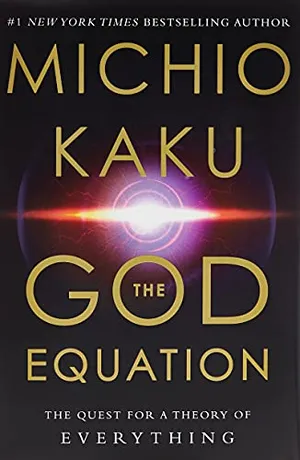
The God Equation: The Quest for a Theory of Everything
When Newton discovered the jurisprudence of gravity, he unified the rules governing the heavens and the Earth. Since then, physicists have been placing fresh forces into ever-grander theories .
Fuzz: When Nature Breaks the Law, by Mary Roach
Of all of the authors on our number this year, Mary Roach is the one we most want to have a beer with. In her amuse book Fuzz, she interviews and accompanies experts—from a wildlife biologist tracking mountain lions to a biowarfare specialist studying toxic peas—to learn how they deal with instances of animals and plants “ breaking the law. ” Roach heads to Colorado to find out whether bears can be prevented from rummaging through drivel and breaking into homes, to India to find out why elephants kill villagers, and to Canada to see how “ risk trees ” that could fall and kill hikers are brought down. The bible is packed with far-out facts and violent from-the-field dispatches. Her discoveries range from the lighthearted—bears in Minnesota once raided a big supply of MREs, “ which bears apparently enjoy more than soldiers do ” —to the macabre—effigies, or dead hang birds, were strung up near debris recovered after 9/11 and placed at a landfill. The effigies were meant to prevent gulls from scavenging body parts as inspectors sorted through the wreckage for remains.
Roach details each subject with her characteristic wag and packs the text with faze stats and examples. Did you know 40,000 people die every class from snakebites in India ? Or that in one education season, 200 men spent six to seven hours a day clubbing and killing 80,000 albatross on Midway Atoll that authorities wanted to prevent from colliding with airplanes ? Throughout her travel, Roach documents human responses to plant and animal “ crimes, ” from measures that are amusing to others more disturb, leaving the proofreader occasionally shocked, and always entertained. ( J.S. )
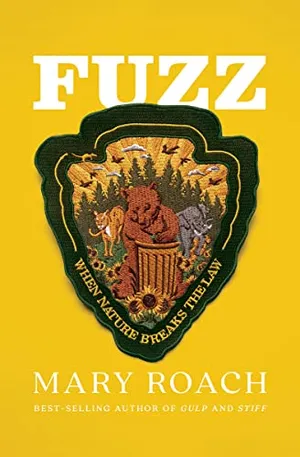
Fuzz: When Nature Breaks the Law
What ’ second to be done about a jaywalk elk ? A bear catch break and entering ? A homicidal tree ? Three hundred years ago, animals that broke the law would be assigned legal representation and put on trial. These days, as New York Times best-selling generator Mary Roach discovers, the answers are good found not in jurisprudence but in science : the curious skill of human-wildlife conflict, a discipline at the crossroads of human demeanor and wildlife biology .
The Disordered Cosmos: A Journey Into Dark Matter, Spacetime, & Dreams Deferred, by Chanda-Prescod Weinsten
theoretical cosmologist Chanda Prescod-Weinstein begins her visionary book The Disordered Cosmos with a fib about the origin of human universe that establishes our role in the universe as both cognition keepers and seekers. Prescod-Weinstein then masterfully communicates her deep admiration of the night flip, what is known about the structure of outer space and what is left to discover about the cosmos. Throughout the reserve, she weaves groundbreaking discoveries made in physics with pivotal moments from her own career as the first Black womanhood to hold a tenure-track faculty position in theoretical cosmology—a travel to decipher the universe in a field that besides much perpetuates injury in ways that are both racist and male chauvinist. She dives into the historic context of scientific breakthroughs, challenges the notion of who gets to be named a scientist and asks what responsibility researchers owe to society. In the same way Prescod-Weinstein teaches that matter shapes the spacetime around it, she besides details how the choices physicists make shape social futures. The Disordered Cosmos is a fierce reminder that science does not exist in a void ; rather, it is a practice securely rooted in humanity—and access to the night flip is possibly the most fundamental human right of all. The book is a love letter to the wonderfully universe we call home, and an recommend to think critically about how we explore its depths. ( Katrina Miller )
Deep Time: A Journey Through 4.5 Billion Years of Our Planet, by Riley Black
Our top blame for a coffee board book this year is Riley Black ’ s Deep Time. Conceiving of the stretch of time since the geological formation of the universe is unmanageable. This book helps the reader do so by picking out key diachronic moments—like the dawn of the dinosaurs and the disappearance of Doggerland, connecting Great Britain to continental Europe—and offering digestible explanations for them with compelling imagination. Black is an technical usher as she has written several books about paleontology—and articles on the topic for Smithsonian for years. But this book doesn ’ thyroxine just stick to fossils and dinosaurs, it besides covers winder concepts in astronomy ( The Hubble Deep Field ), geology ( the formation of the Grand Canyon ) and biota ( mitochondrion ), all in chronological arrange. For exemplar, an entrance titled “ Tongue stones ” with the accompanying date of 450 million years ago—the beginning of sharks ’ universe on Earth—describes the evolution of how european experts thought about shark teeth, and how discipline of the remnants led to a key scientific concept. Black explains that naturalists primitively believed such fossils were the rigidify tongues of serpents. not until a great white shark was brought to an anatomist in 1666 did experts imagine that the relics came from ancient sharks—and that the tooth must have drifted down to the seafloor and been covered by sediment. ( many Indigenous cultures had already identified fossils as coming from animals that lived farseeing earlier. ) That realization led to the geological principle now known as superposition—in layers of rock ‘n’ roll, the oldest are at the bottom. An anatomist ’ randomness 1668 sketch of a shark, an prototype of a great white shark and a photograph of fossilized shark teeth dating from the Upper Cretaceous illustrate this entry. The book consists of 50 such instructive entries, which allow the lector to grasp how scientists learned about cardinal milestones in the evolution of our satellite. ( J.S. )
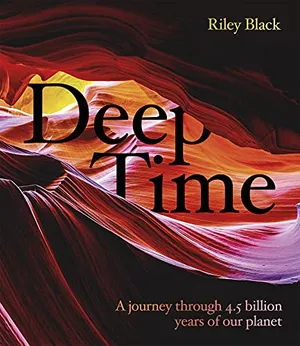
Deep Time: A journey through 4.5 billion years of our planet
deep time is the timescale of the geological events that have shaped our satellite. Whilst so huge as to challenge human understand, its evidence is however visible all around us .
Life’s Edge: The Search for What It Means to Be Alive, by Carl Zimmer
We seem to intuitively know the remainder between living things and inorganic matter—but as award-winning science writer Carl Zimmer makes abundantly acquit in Life ’ south Edge, that limit is not vitamin a astute as one might imagine. Is a blood cell active ? What about a virus ? Or a inseminate egg ? The notion of end turns out to be evenly fuzzed. Tiny tardigrades that grow to no more than one-fifteenth of an inch can be dried out and fixed, but add water and heat and they spring back to life after years or even decades. Scientists know animation took hold on our planet some 3.5 billion years ago, based on the oldest known fossils—but how precisely did it happen ? Zimmer revisits a celebrated experiment carried out in the early 1950s by scientists who tried to simulate the conditions thought to prevail on the early earth. While no creatures crawled out of their apparatus, the experiment did produce amino acids, which are among life ’ mho construction blocks. Zimmer besides explores a holocene idea known as assembly hypothesis, which tries to give a accurate measure of the complexity of chemical compounds as a way of honing in on life ’ second origins. And yet, no accurate moment when chemistry gives originate to biology has been found. After reading Zimmer ’ s engaging book, the lector might even wonder if categories like “ alert ” and “ not animated ” are labels we impose on nature, rather than objective features of the world. ( Dan Falk )
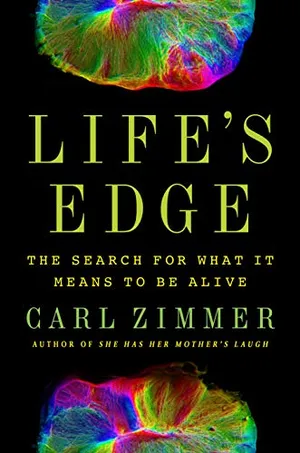
Life’s Edge: The Search for What It Means to Be Alive
We all assume we know what life is, but the more scientists learn about the life world—from protocells to brains, from zygotes to pandemic viruses—the hard they find it is to locate life ’ mho edge .
Beloved Beasts: Fighting for Life in an Age of Extinction, by Michelle Nijhuis
In Beloved Beasts, Michelle Nijhuis takes a compelling look at the history of the conservation movement since the late nineteenth century. The generator weaves an intricate report by detailing the efforts of key conservationists—complex individuals who Nijhuis writes sometimes “ did the faulty things for the right reasons, and the right things for the faulty reasons. ” The proofreader learns of William Temple Hornaday, who killed a number of rare bison in the West in 1886 for a D.C. panorama before starting a captive breeding program to save the species. Nijhuis shares the history of Rosalie Edge, a boo fan who fought the Audubon Society in the 1920s and 1930s to gain more confirm for raptors and bought Hawk Mountain, a key migration blot in Pennsylvania that has become an important place for counting birds. As Nijhuis introduces new characters, from Rachel Carson to Aldo Leopold, she establishes their connections to conservationists that preceded them and packs the book with concern facts. Did you know, for example, that the U.S. adopted DDT during World War II after losing access to the japanese grow chrysanthemum that had been a reservoir of the insecticide pyrethrum ? Or that most species protection by state wildlife agencies is funded by hunting license fees and taxes on hunting equipment ? today, as Nijhuis writes, more than one million species are threatened with extinction, and in the last two decades more than 1,800 conservationists have been murdered protecting species and habitat. To better understand how conservation might move forward to address these awful conditions, it helps to have this comprehensive history detailing the failures and successes of celebrated practitioners. ( J.S. )
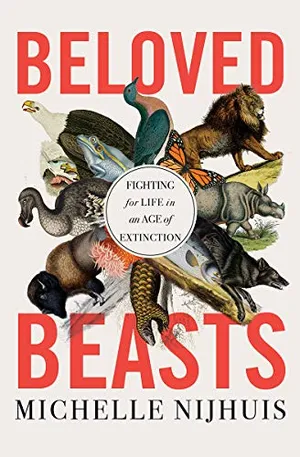
Beloved Beasts: Fighting for Life in an Age of Extinction
In the former nineteenth hundred, humans came at long stopping point to a annihilative realization : their quickly industrializing and globalizing societies were driving scores of animal species to extinction. In Beloved Beasts, acclaimed skill diarist Michelle Nijhuis traces the history of the apparent motion to protect and conserve other forms of life .
Read more: 15 Mystery Series That’ll Keep You Guessing
Recommended Videos


